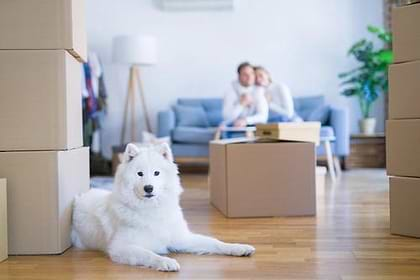
Let’s face it: there are few sights more adorable and pure than that of a peacefully sleeping dog. No matter how old or big our canine companions might get, they will always be our babies. As such, we want to spoil them and make sure they are always feeling as loved as possible. A wonderful way to make sure they are comfortable and that their needs are always being met is to provide them with an abundance of items they enjoy.
These items can be anything from exciting toys to delectable treats, and so much more. However, as hard as our dogs might play, chances are that they sleep even harder. Our dogs give each and every day their all, and that enviable philosophy should apply to their nights as well.
By giving our dogs a bed, we ensure that they will be totally comfortable. Not only will they know this space is one that is completely theirs, but they will also appreciate the gesture of love from you.
There are, however, a few questions that can often come up for dog owners when it comes to determining the perfect bed arrangement. For instance, what kinds of dog beds should you look for, and does the kind of dog you have determine the bed you should get? Then, there is one last, possibly most important question. How many dog beds should each home have?
What Are the Benefits of Giving a Dog a Bed?
The benefits of providing your dog with a bed just right for them are many and varied, but understanding them can help immensely in determining what kind to get them. Without a bed specifically for them, dogs will have to find another place where they can rest their heads. After all, the lack of a bed is not going to stop your dog from laying down.
If they do not have a soft surface at their disposal, they will instead likely try to use your furniture instead. A couch would certainly make for a worthy substitution if there is no dog bed in sight. Then, they could also make themselves cozy on your bed, even if you might not want them to be there. If you do not want them on your furniture and you have properly trained them not to go on it, then their options continue to dwindle.
Without a dog bed and without being allowed onto soft furniture, your dog will likely have to resort to resting on the floor. If you have ever laid down on the floor for a prolonged period of time, chances are that you have recognized that this is far from the most comfortable position. Even if your dog is not particularly uncomfortable at the moment, this could be doing some lasting damage to their body.
Sleeping on the floor can be very hard on a dog’s bones and joints. Especially as they get older, arthritis can become a real concern that causes discomfort and pain. Resting on the floor can serve to exacerbate this pain. Due to these reasons, you should always offer your dog a soft bed of their own.
Do Dogs Enjoy Sleeping in Beds Just for Them?
If you have never seen a dog snoozing the day away in their special bed, then you might not know just how much they enjoy these soft surfaces. When a dog has a bed that is just for them, they learn they have at least one space that is all theirs. However, they should actually have more than just one. This brings us to our next point.
Keep a Dog Bed in Every Room That You Frequent Most Often
When figuring out exactly how many beds your dog should have in your home, it is a worthwhile endeavor to think about where both you and your pet regularly are in your home. While you are thinking about this, you will likely discover that you spend a lot of time in the same rooms, likely spending time together. In fact, dogs naturally gravitate toward being around us. It has been found that, in many ways, being in your proximity is a reward in and of itself to your dog.
This behavior is incredibly sweet and should be catered to when we are looking into beds for our canine companions. We can show them that the feeling of comfort that they get while in our presence is mutual by giving them a comfortable space to be around us. Think about the rooms that you are in the most often. Maybe you spend a lot of time in your living room, your bedroom, and the kitchen. If this is the case, then you are going to want to give your dog a bed in each room.
Could You Just Move a Single Dog Bed Back and Forth Between Rooms?
We have established that it is important to have a bed for your dog wherever you are. However, some people might believe that they have found a simple solution to this problem. You could simply take your dog’s one bed from room to room as you move. Unfortunately, many people find that this option is much less beneficial in practice than they had hoped.
The truth of constantly moving a dog bed from room to room is that it is an annoyance. By going this route, you are guaranteed a great deal of lugging the bed from room to room, and you might feel less able to move about your home freely. Not only that, but it is only natural that you will often forget to move your dog’s bed to the room that you are planning on spending some time in.
This bed will also get worn out much faster, both because it is being used constantly and because you are frequently moving it around. Also, if you have a particularly large dog, moving a bulky and possibly heavy bed from place to place is not an overly fun activity.
Consider if You Have Multiple Dogs in Your Household
If you have more than one dog in your home, first of all, congratulations! Second of all, you are going to need to offer each dog at least one bed. This ensures that there will never be any jealousy between your dogs, as each of them will always have an available bed to use. That being said, you may want to have more than just the minimum.
If all of your dogs like to be with you in a particular room, it might be best to put several beds in that space. Also, if your dogs regularly enjoy snuggling together, consider investing in a large dog bed that they can be in at the same time.
How To Get Your Dog To Use Their Bed
When you first get your dog their own bed, it is possible that they will continue to rest on the floor, furniture, or other neighboring surfaces for a little while. If this is the case for your dog, do not fret. In all likelihood, they are simply getting used to this new accessory in their home before they fully accept it into their lives. Soon enough, you will probably notice your dog sniffing around their new bed and inspecting it thoroughly.
If your dog is feeling a bit more trepidation when it comes to fully making themselves comfortable in their bed, there are some steps you can take to fix this. First of all, it is possible that their reluctance is stemming from the fact that their bed does not yet smell like them. In this case, you can put one of their favorite toys or blankets onto the bed. This will signal to your dog that this bed is a space for them, and after realizing how comfortable it is, they will be sleeping on it before you know it.
Then, there is always the oldest and most reliable way to get a dog to do anything: food. If you sprinkle some of your dog’s top favorite treats on or around their new bed, they are sure to pay a great deal of attention. Put the treats somewhat far onto the bed and possibly even hide them if you can. This will make your dog get more acquainted with the space, and will also give them some added mental stimulation while finding the treats.
Does the Kind of Dog You Have Affect What Bed Would Be Right for Them?
There is also the question of whether or not your type of dog has any specific needs or requirements for which kind of bed they should have. Of course, larger dogs will require larger beds. However, if the beds are too large, they might be difficult to fit into various spaces in your house. Make sure that your dog’s bed is sizable enough for them to settle comfortably.
You can do this by measuring your dog from end to end (from the tip of their nose to the tip of their tail). Make sure that their bed is at least this long. However, you do not need your dog to be drowning in a sea of bed either. Your dog should never be cramped, but too much room can prove to be a nuisance for both your dog and you.
You should also consider if your specific dog has any kind of preferences or allergies that would determine the kinds of beds they can sleep in. For example, if you have a dog who regularly digs in their bed, you should look for something more durable. If they have had beds in the past that they have used much more than other ones, it is best to stay within that type. For instance, if they prefer rectangular beds, then you should stick with those.
Lastly, if your dog is on the older side, it is likely that they are regularly experiencing some aches and pains associated with aging. Make sure to give this dog an especially comfortable option such as a memory foam bed. This will be much easier on their joints and provide an added layer of comfort.
Putting the Matter to Bed
Many dogs prefer to sleep in beds while they get approximately 12 hours of beauty sleep a day. That being said, you always want to make sure that your dog has enough options when deciding where they want to sleep.
Sources:
Arthritis in Dogs: How To Treat and Manage Pain | American Kennel Club
Just Being Near You Is Rewarding for Dogs | Psychology Today

The Diggs Team
We believe our dogs deserve safer, better designed pet products.
You might also like
Crate training tips, stories and inspiration
View all blogsIn Your Diggs
Share your photos with #DiggsPet and tag us @DiggsPet on IG and TikTok.


